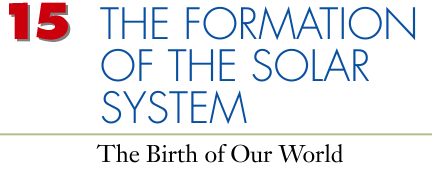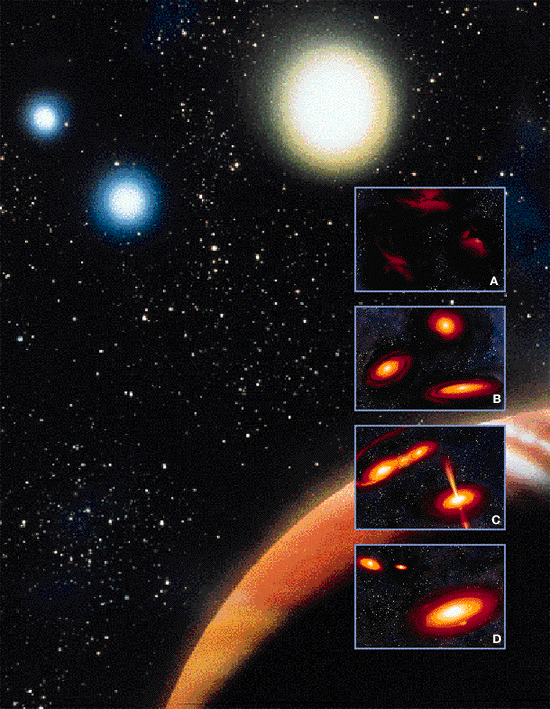

(Background) An imaginary triple-star system, viewed from the vicinity of a Jupiter-like planet. The planet's parent star resembles our Sun, hence its yellowish appearance. The other two stars are much hotter, and appear bluish. The four inserts show, from top to bottom, a possible evolutionary sequence that gave rise to the triple-star system.
(Inset A) Neighboring, dark galactic clouds contracting, their central regions heating enough to emit a reddish glow.
(Inset B) Formation of huge, rotating disks of glowing matter around young stars ("protostars") foster further heating at their cores.
(Inset C) Two of the protostars become gravitationally bound to each other, interacting somewhat violently; the third (foreground) protostar drifts farther away, allowing it to evolve more calmly.
(Inset D) The third protostar continues to evolve slowly, with planet-sized clumps ("protoplanets") beginning to emerge within the disk.
Studying this chapter will enable you to:
Summarize the major features that a theory of solar system origins has to explain.
Outline the process by which planets form as natural by-products of star formation.
Explain the role played by dust in the currently accepted model of solar system formation.
Account for the differences between the terrestrial and the jovian planets.
Discuss the role of collisions in determining specific characteristics of the solar system.
Explain the angular momentum problem and discuss some proposed solutions.
Completing these chapters on the planets, you may be struck by the vast range of physical and chemical properties found in the solar system. The planets present a long list of interesting features and bizarre peculiarities, and the list grows even longer when we consider the characteristics of their moons. Every object has its idiosyncrasies, some of them due to particular circumstances, many others the result of planetary evolution. Each time a new discovery is made, we learn a little more about the properties and history of our planetary system. Our astronomical neighborhood may seem more like a great junkyard than a smoothly running planetary system. Can we really make any sense of the entire collection of solar system matter? Is there some underlying principle that unifies the knowledge we have gained? The answer, as we will see, is yes.